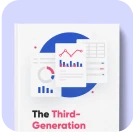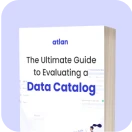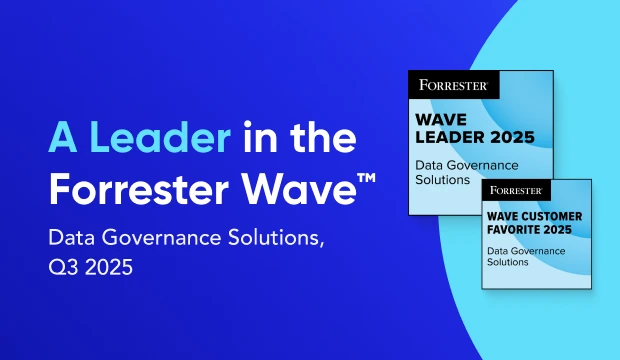Automated Data Catalog: What Is It and How Does It Simplify Metadata Management, Data Lineage, Governance, and More for 2024
Share this article
Building a data catalog might seem purely technical, yet its essence lies in empowering data practitioners to swiftly find, trust, understand, and use their data.
When your enterprise has a vast data landscape, growing exponentially in volume, velocity, variety, and veracity – managing, updating, and maintaining it manually is impossible.
Automated data catalogs provide a reliable, up-to-date view of your data assets, help with automated documentation and understanding your data.
See How Atlan Simplifies Data Cataloging – Start Product Tour
This article will discuss the concept of automated data catalogs and explore how AI/ML empowers them for efficient metadata management, data governance, democratization, and collaboration.
Table of contents #
- What is an automated data catalog?
- 5 key benefits of automated data catalog
- How to evaluate automated data catalogs
- Bottomline
- Automated data catalog: Related reads
What is an automated data catalog? #
An automated data catalog uses AI and ML to visualize your entire data estate, maintaining accurate, updated metadata for every asset.
It captures all types of metadata (technical, logical, usage, semantic), data models, relationships, and mappings. It also automatically updates and synchronizes metadata changes across all connected systems in your enterprise.
Besides automatic metadata capture and management, these smart, self-sufficient catalogs also understand your data.
They can analyze the metadata, identify relationships between assets, and provide AI-powered suggestions for data enrichment and rule-based tagging (upstream and downstream).
How automated data catalogs map your data estate and improve time-to-value #
Many first-generation data catalogs require an army of data stewards and other data practitioners to keep them running — manually connecting data sources, tracing data flows across disjointed systems, classifying and tagging data assets, etc.
This process is prone to errors and can quickly become outdated as data pipelines evolve and the data itself becomes dynamic and complex.
The automated data catalog would map data asset relationships across systems at a granular level — columns, tables, and transformations. So, you can see exactly where your data comes from, how it’s transformed, and where it’s used.
By automating your workflows, an automated data catalog lets you:
- Use no-code, native integrations to quickly connect and auto-ingest metadata from source systems
- Set up rule-based enrichment and tagging for upstream and downstream data assets (via playbooks and automated lineage mapping)
- Establish an ongoing, event-driven, real-time capture of metadata to build a connected data ecosystem with end-to-end visibility of all data products (sources, tables, pipelines, code, APIs, dashboards, etc.)
- Perform proactive impact analysis (in GitHub and GitLab) that prevents breaking changes in critical dashboards
- Document at scale with AI-suggested metadata
Modern data catalogs like Atlan take automation and AI to the next level with a rich, intuitive UI that supports navigating, exploring, filtering, searching, and highlighting specific lineage elements along with overlayed metadata.
Also, read → Data catalog: What it is & its business value
How Mistertemp deprecated two-thirds of its Snowflake assets & 60% of its Looker assets with an automated data catalog #
Mistertemp, a leader in recruitment and temporary work based in France, wanted to modernize its data stack and improve the visibility of its data assets.
Using Atlan’s automated lineage, Mistertemp’s data team could quickly and easily understand which Snowflake assets were, or were not, connected downstream.
With Atlan Popularity (a feature that showed the frequency of usage and queries against a data asset), they could determine how often people used these assets.
Of their 1,500 tables and 30,000 assets on Snowflake, fewer than half of the tables and one-third were used in the previous year.
Atlan’s column-level lineage and usage metrics also revealed that building one-off reports was costly. 60% of their BI assets in Looker (dashboards, views, dimensions, and measures) went unused.
So, Mistertemp’s analysts had been maintaining these unused reports even as underlying assets evolved or systems changed upstream, driving unnecessary costs and effort.
As a result, with Atlan’s automated data catalog, Mistertemp deprecated two-thirds of its assets to build a transparent, cost-effective data estate.
5 key benefits of automated data catalog #
The biggest benefits of an automated data catalog are:
- Effortless data discovery: Data practitioners can quickly find the data they need through intuitive search and AI-suggested metadata.
- Proactive root cause and impact analysis: Automated, cross-system, column-level data lineage gives you a clear view of data flows, so that you understand data dependencies, troubleshoot errors proactively, and make informed decisions.
- Data quality assurance: Automated data profiling and quality checks ensure your data is accurate and reliable.
- Streamlined governance: Automated data lineage tracking, access controls, and compliance reporting lead to better security and responsible data use.
- Increased productivity: Automated data catalogs significantly cut down the manual labor involved in managing metadata, allowing data stewards and engineers to focus on more strategic tasks. This fosters innovation, speeds up deployment, and improves time-to-value.
How to evaluate automated data catalogs #
To choose the right automated catalog for your enterprise, consider the following factors:
- Integration capabilities
- AI and automation features
- Real-time metadata capture
- Intuitive, actionable, rich UI/UX (that works for both technical and non-technical users)
- Quick and easy deployment, adoption, and time-to-value
- Data privacy and security capabilities
- Data governance, risk, and compliance features
- Scalability
- Customer support
Dig deeper → How to evaluate enterprise data catalog, according to Forrester
Bottomline #
Automatically cataloging your enterprise’s entire technology, data, and AI ecosystem is vital for comprehensive data governance, compliance, and use across the organization.
Automated data catalogs like Atlan offer advanced automation, AI capabilities, and real-time insights to improve data quality, promote self-service, and speed up time to value.
Atlan is an automated data catalog that acts as a data and AI control plane, powered by metadata. Recently, Atlan was named a Leader in The Forrester Wave™ Enterprise Data Catalogs, Q3 2024, achieving the highest possible scores in 11 criteria, including metadata management, data lineage, adoption and deployment, and time-to-value.
If you are looking for a automated data catalog for your team — Book a demo with Atlan.
Automated data catalog: Related reads #
- Data Catalog: What It Is & How It Drives Business Value
- What Is a Metadata Catalog? - Basics & Use Cases
- Modern Data Catalog: What They Are, How They’ve Changed, Where They’re Going
- Open Source Data Catalog - List of 6 Popular Tools to Consider in 2024
- 5 Main Benefits of Data Catalog & Why Do You Need It?
- Enterprise Data Catalogs: Attributes, Capabilities, Use Cases & Business Value
- The Top 11 Data Catalog Use Cases with Examples
- 15 Essential Features of Data Catalogs To Look For in 2024
- Data Catalog vs. Data Warehouse: Differences, and How They Work Together?
- Snowflake Data Catalog: Importance, Benefits, Native Capabilities & Evaluation Guide
- Data Catalog vs. Data Lineage: Differences, Use Cases, and Evolution of Available Solutions
- Data Catalogs in 2024: Features, Business Value, Use Cases
- AI Data Catalog: Exploring the Possibilities That Artificial Intelligence Brings to Your Metadata Applications & Data Interactions
- Amundsen Data Catalog: Understanding Architecture, Features, Ways to Install & More
- Machine Learning Data Catalog: Evolution, Benefits, Business Impacts and Use Cases in 2024
- 7 Data Catalog Capabilities That Can Unlock Business Value for Modern Enterprises
- Data Catalog Architecture: Insights into Key Components, Integrations, and Open Source Examples
- Data Catalog Market: Current State and Top Trends in 2024
- Build vs. Buy Data Catalog: What Should Factor Into Your Decision Making?
- How to Set Up a Data Catalog for Snowflake? (2024 Guide)
- Data Catalog Pricing: Understanding What You’re Paying For
- Data Catalog Comparison: 6 Fundamental Factors to Consider
- Alation Data Catalog: Is it Right for Your Modern Business Needs?
- Collibra Data Catalog: Is It a Viable Option for Businesses Navigating the Evolving Data Landscape?
- Informatica Data Catalog Pricing: Estimate the Total Cost of Ownership
- Informatica Data Catalog Alternatives? 6 Reasons Why Top Data Teams Prefer Atlan
- Data Catalog Implementation Plan: 10 Steps to Follow, Common Roadblocks & Solutions
- Data Catalog Demo 101: What to Expect, Questions to Ask, and More
- Data Mesh Catalog: Manage Federated Domains, Curate Data Products, and Unlock Your Data Mesh
- Best Data Catalog: How to Find a Tool That Grows With Your Business
- How to Build a Data Catalog: An 8-Step Guide to Get You Started
- The Forrester Wave™: Enterprise Data Catalogs, Q3 2024 | Available Now
- How to Pick the Best Enterprise Data Catalog? Experts Recommend These 11 Key Criteria for Your Evaluation Checklist
- Collibra Pricing: Will It Deliver a Return on Investment?
- Data Lineage Tools: Critical Features, Use Cases & Innovations
- OpenMetadata vs. DataHub: Compare Architecture, Capabilities, Integrations & More
- Automated Data Catalog: What Is It and How Does It Simplify Metadata Management, Data Lineage, Governance, and More
- Data Mesh Setup and Implementation - An Ultimate Guide
- What is Active Metadata? Your 101 Guide
Share this article











